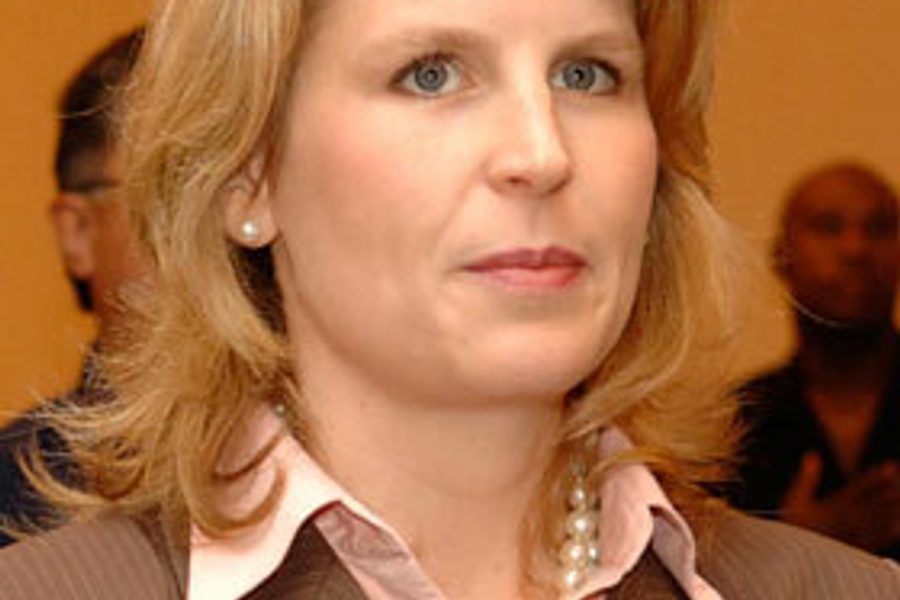
As the youngest national AFL-CIO officer ever elected, Liz Shuler, 39, the federation’s new secretary-treasurer, will — no surprise here — play a leading role in President Richard Trumka’s new initiative to reach out to young workers.
It’s a worthy initiative, albeit a bit muddled right now, but one that can easily be given clearer focus.
Shuler rose quickly through the ranks of the International Brotherhood of Electrical Workers (IBEW), mainly through political and legislative work starting in Oregon, ending up as IBEW President Ed Hill’s top aide, overseeing 11 union departments.
In a labor culture that prizes seniority, especially in a male-dominated construction, utility and manufacturing union, her ascent was unusual and outside the internal union political process.
In her acceptance speech at the AFL-CIO convention last week, Shuler said:
We need to revitalize and unify labor at every level. We need to reach out to unorganized workers –especially those under 35 – who, for whatever reason, don’t see us as the answer to the economic problems they face.
It’s not that today’s young people don’t like unions; it’s just that they really don’t know about us. Their images come from the movies and corporate America. And that’s our fault.
Our message needs to resonate across generational lines. For the first time in history, we have four generations in our movement as active and retired workers, ranging from those whose lives were shaped by the great depression and World War II, to the well-documented baby boomers, to Generation X, and to the millennials, those born in the 1980s and later.
There is a world of difference in their life experiences. As we saw in the report on younger workers issued by the AFL-CIO last week, one in three worries about finding a permanent full-time job with benefits. And an equal number are still living with their parents. How many of you can relate?
Later, in an interview, she elaborated:
Young people are further and further removed from the labor movement. They used to have a parent, now a grandparent, associated with the labor movement. So young people’s exposure to the good things we do, the things we have to offer, are further from their minds. Part of our job is to get the message out there, to be thinking how do we reach these young workers.
And, she added, judging from a new study for the AFL-CIO:
It’s clear that [18 to 35-year old] demographic is most in need of what we have to offer. It’s about connecting the dots. They’re most affected by the downturn in the economy, but they don’t realize labor is the answer.
One big difference, Shuler stressed, is younger workers’ reliance on the internet for news, blogs, social media, YouTube and other web phenomena. She also suggested – then expressed uncertainty about – that many young workers don’t think of themselves as “workers,” but as associates, team members or professionals.
But the recent AFL-CIO report , “Young Workers: A Lost Decade,” reported that 50 percent of young workers said employees are better off with a union, compared to 23 percent who said they were worse off and 11 percent who saw no difference.
And Guy Molyneux of Hart Research, which prepared the report, says that younger workers viewed unions more favorably than older workers and in their most recent polls expressed more interest in joining unions. Shuler sees that side of youth as well:
It’s that spirit of activism, wanting to make a difference, to change the world. It showed in the Obama campaign. We worked side-by-side with these young activists. We want to figure out a way to harness that energy, to bring them in our movement.
Trumka also talked about new jobs and new needs of a younger generation:
The labor movement can’t ask the next generation of workers to change how they earn their living to fit our model of trade unionism.
No! We have to change our approach to organizing and representation to better meet their needs.And we will!
By the end of the first quarter of 2010, we will organize a summit of these new generation workers to discuss their struggles and craft an action agenda that responds to their needs not ours.
Unions clearly need to reach out to young workers and nurture – and allow – younger leaders, not because they’re unsympathetic to unions, but because they’re more eager to join. They may not know a lot about unions, but they are starting to connect the dots between their needs and unions.
Many of their jobs are different from those in the labor movement — less stable, more in services, and some with different needs — and they have more interest in training and how to advance in their careers. But they still see the need for collective action. The issue for unions is not just harnessing youthful energy but unleashing it and its creativity.
Unions can always do a better job educating the public, including young people, and using new media. They need to change for the benefit of all workers, including young workers.
The new AFL-CIO leaders rightfully are trying to reach the young. But they seem to be starting their quest with some dubious assumptions. Some honest listening, as Trumka promises, can easily clarify what younger workers want and where unions fit in.
David Moberg, a former senior editor of In These Times, was on staff with the magazine from when it began publishing in 1976 until his passing in July 2022. Before joining In These Times, he completed his work for a Ph.D. in anthropology at the University of Chicago and worked for Newsweek. He received fellowships from the John D. and Catherine T. MacArthur Foundation and the Nation Institute for research on the new global economy.








